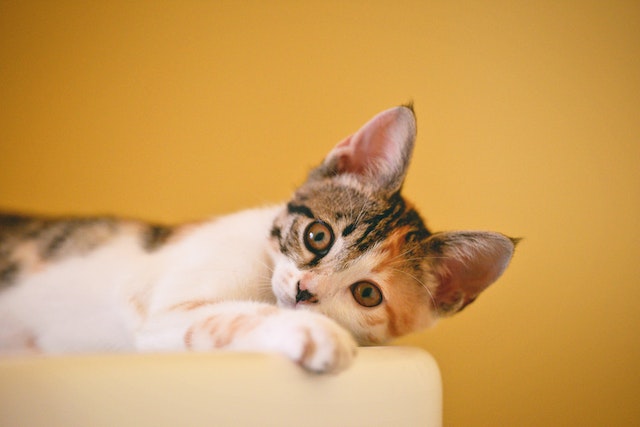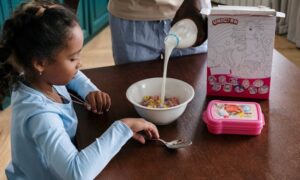
Selecting the appropriate cat litter is important and directly affects your cat’s comfort, hygiene, and overall happiness. Amid the array of cat litter options available, it’s crucial to comprehend the distinct types and their unique qualities. This understanding aids in identifying the most fitting choice for your cat’s preferences and household dynamics. This article will delve into seven diverse cat litter types and guide you in discovering the most suitable match for your cherished feline friend.
1. Clumping Clay Litter
One of the most prevalent cat litter options is clumping clay litter, which forms solid clumps upon contact with moisture. These clumps are easily removable, extending the duration of a clean litter box. Particularly convenient for multi-cat households or busy pet owners, this variety might generate dust that could be bothersome for sensitive cats and necessitate more frequent replacements to prevent odor buildup.
2. Non-Clumping Clay Litter
Non-clumping clay litter offers an alternative to clumping options. While it absorbs moisture effectively, it does not solidify into clumps. Consequently, it requires more frequent changes. Often favored for kittens, non-clumping clay litter minimizes the risk of accidental ingestion of clumps.
3. Silica Gel Crystal Litter
Silica gel crystal litter features absorbent, translucent crystals that capture moisture and control odors. It is renowned for its exceptional moisture absorption and minimal dust emissions. These crystals change color as they absorb moisture, indicating when litter replacement is due. Silica gel crystal litter proves long-lasting, reducing the frequency of litter box changes. However, some cats may exhibit sensitivity to the texture of these crystals.
4. Natural/Biodegradable Litter
Natural or biodegradable litter is crafted from renewable materials such as wood, paper, corn, wheat, or grass. These eco-friendly options decompose naturally and often have flushable properties. Typically generating less dust and offering gentler textures for cats’ paws, these litters may require more frequent replacements as they might not control odors as effectively as other alternatives.
5. Pine Pellet Litter
Pine pellet litter is derived from compressed sawdust pellets and has impressive absorbency and natural odor management. Upon contact with moisture, the pellets disintegrate into sawdust, simplifying sifting. This litter’s distinct pine scent might appeal to cats and cat owners. However, transitioning cats accustomed to traditional litters to this texture could take some time.
6. Recycled Paper Pellet Litter
Manufactured from compressed recycled paper, pellet litter offers absorbent qualities that naturally control odors. This type is devoid of dust and gentle on feline paws. Additionally, it aligns with eco-friendly principles, as it is biodegradable and made from recycled materials. While non-clumping, like clay-based litter, remains effective in managing odors and reducing waste,.
7. Walnut Shell Litter
Crafted from crushed walnut shells, this litter variety delivers natural odor control and strong absorption capabilities. It is renewable and biodegradable, boasting gentle attributes for cats’ paws. Walnut shell litter minimizes dust production and introduces a unique texture that certain cats might find appealing. However, it’s worth noting that this option might carry a higher price point compared to other litter types.
Determining the Ideal Litter for Your Cat
In the quest to find the optimal litter for your cat, several factors demand consideration, including your cat’s preferences, your household’s requirements, and any potential sensitivities your cat may possess. Here are some key points to contemplate:
- Texture Preference: Cats often exhibit specific inclinations toward litter texture. While some favor fine grains, others may embrace larger pellets or crystals. Observe your cat’s response when introduced to different textures.
- Odor Control: If odor management ranks high on your list, seek out litters specially designed for odor neutralization. Remember your cat’s fragrance tolerance, as some cats prefer unscented options.
- Dust Level: Dust can pose challenges, particularly for cats with respiratory sensitivities or allergies. Opt for low-dust or dust-free litter to ensure your cat’s comfort.
- Clumping vs. Non-Clumping: Reflect on your cleaning preferences. Clumping litters streamline scooping, while non-clumping counterparts may necessitate more frequent complete changes.
- Environmental Impact: For those valuing ecological sustainability, explore biodegradable and eco-friendly choices composed of renewable materials.
- Allergies and Sensitivities: Cats could harbor sensitivities to specific materials or fragrances. Suppose your cat displays allergies or sensitivities. Lean toward hypoallergenic or unscented litters.
- Age and Health Considerations: Tailor your choice to your cat’s age and health status. Kittens might benefit from gentler litters, while older cats with arthritis could gravitate toward less abrasive textures.
- Transitioning: When transitioning to a new litter, mix the new and old litter gradually. Cats may resist abrupt changes, and a gradual approach alleviates potential stress.
Conclusion
With a multitude of options available, ranging from traditional clay to innovative eco-friendly choices, finding the perfect cat litter can significantly enhance your feline companion’s comfort and your living environment. By thoughtfully considering factors like texture, odor control, and environmental impact, you’re well-equipped to make an informed decision that fosters a harmonious and hygienic relationship between you and your cherished cat.






